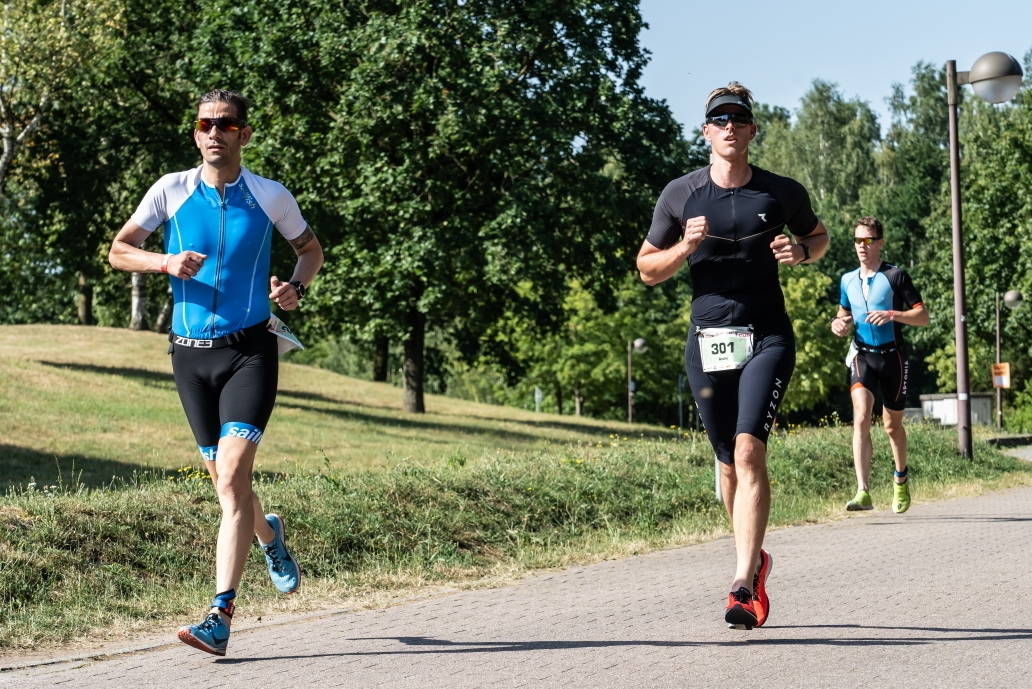Now that you've learned how to prepare for swimming and cycling as effectively as possible in the last two articles, let's move on to the last discipline - running. The distance of the running course in the Volkstriathlon (5km) doesn't sound like much at first. However, the last triathlon discipline is not comparable to a normal jog.
It is a completely different strain on both body and mind to have to run after the first two disciplines. The muscles are already tired and changing the movement can cause difficulties. So don't just rely on your stamina, because after the previous load you have to maintain an economical running style and a stable technique under fatigue conditions and this has to be learned first. You can find out how to do this in the following article.
technical training
In order to prepare your body and running style as extensively as possible for the changed load, it makes sense and is important to integrate so-called running ABCs into your training. These consist of ankle, hip, knee and stability units. Jumps and coordination exercises are also included and everything should be carried out with great precision and concentration over short distances. The aim of the ABC of running is to raise awareness of the different movements involved in running in order to make the technique more economical. If you integrate these exercises into your running training once a week, this can quickly lead to great progress for newcomers.
increase in route length
If the 5 kilometers are already causing you problems, this is the first thing you should focus on. To do this, you can constantly increase the distance of your training sections until you can cover the target distance relatively easily. If you are not able to jog continuously at first, you can alternatively recover with brisk walking or slow running and thereby increase the duration of the training load a little. Then try to keep reducing the time that has passed and aim for your first triathlon to be able to run 1 hour at a moderate pace.
increase speed
In order to complete the running distance as quickly as possible, it is not enough if you only do monotonous endurance running during training. Your training should consist of base sessions at a moderate pace (<75% of HRmax) and interval sessions at an increased pace. Alternating between recovery and exertion phases during interval training is the most efficient way to increase running speed. During the stress phase, your pace should be well above your endurance run and even slightly above your target race pace. During the recovery period, it's okay to just lightly trot or walk.
where to train
Professionals usually train their speed on the track in order to be able to control their speed as precisely as possible. If this is too monotonous for you as a beginner, you can also use your normal running lap. You should just make sure that it doesn't have too many meters of altitude. If you have problems with your motivation, training in a group can also help to keep the right speed, because you can support and push each other.
Proper training
Before you really get started with your interval program, you should warm up well first. Feel free to integrate a few exercises from the ABCs of running or complete a few progression runs. If you have successfully completed your training, then don't jump in the car or take a shower straight away, but run a bit more easily.
Discover the huge trisuit collection
From the basic one-piece suit to the high-end aerosuit
Example program - interval unit
- Week: 2 x 400 m or 2 x 2 min, 1 min easy jog
- Week: 4 x 400 m or 4 x 2 min, 1 min easy trot
- Week: 6 x 400 m or 6 x 2 min, 1 min easy trot
- Week: 3 x 1000 m or 3 x 5 min, 2 min easy jog
- Week: 4 x 1000 m or 4 x 5 min, 2 min easy trot
- Week: 5 x 1000 m or 5 x 5 min, 2 min easy trot
Triathlon Specific Running
As already mentioned, it is not only about your endurance, but also about your performance under fatigue conditions. In order to practice this in preparation, so-called coupling training is suitable, in which you “couple” the triathlon disciplines together during training. For example, you can simply spend an hour on the bike before a 30-minute run. In this way, your body gets to know the load changes and you can practice running effectively even when you are tired. You are welcome to vary the speed and length of your coupling training. And to improve your speed, it's best to add a few progression runs at the end of the endurance run.
Dose of paddock training
Since you are subjecting your body to a lot of strain here, you should use the coupling units fairly carefully as a beginner. It is better if you first take care of training your technique, endurance and speed and then take care of getting used to the movement and load differences in paddock training.
If you take all of this into account in your running training, the last few kilometers of your first triathlon should no longer pose a problem!
The entire series: fit for the popular triathlon
#3 Running: the last kilometers




















